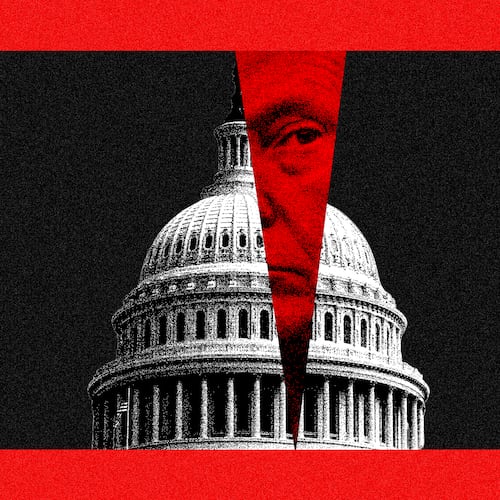Former President Richard Nixon tried to convince his foreign adversaries he was prone to becoming a “madman.” In his calculation, adversaries who believed he might act irrationally would think twice before pushing him.
It was theater, designed to keep the Soviet Union and its allies, particularly North Vietnam, off balance.
Political analysts spent much of President Donald Trump’s first term — and the run-up to his second — debating whether his erratic, instinct-driven foreign policy reflected a grounded strategy, often invoking Nixon’s “madman” theory.
In the first term, experienced principals in his Cabinet sometimes steadied outcomes, which helped that label linger; in 2025, it obscures more than it explains.
White House gives mixed signals to friends and foes alike
Nixon’s “madman” gambit depended on coherence at the core; behind the bluster, a strategy anchored the act. The president’s team knew what they wanted: leverage in negotiations with Hanoi, pressure on Moscow, freedom of maneuver globally. The unpredictability was deliberate, the signaling purposeful.
Credit: Handout
Credit: Handout
Trump’s foreign policy is not a designed mask of madness but the muddle of schizophrenia — a system driven by competing impulses, his own and those of advisers who echo rather than challenge him.
The “madman” label flatters chaos as craft, but it belongs to another presidency. What defines this one is disorder — persistent, internal and self-reinforcing. This is not a tactic. Certainly not a doctrine. It is a condition. And it is dangerous.
Allies and adversaries alike face conflicting signals from the White House, sometimes in the space of a single week. One day, a trade war is declared; the next, deferred. An alliance is labeled obsolete, but is subsequently deemed indispensable. A Pentagon review promises clarity, only to be pulled back before release. This is not the performance of volatility — it is the practice of incoherence.
Credit: AP
Credit: AP
Hegseth throws a wrench in NATO allies’ long-term budgeting
Nowhere has this disorder been clearer than the administration’s policies toward Europe. When Defense Secretary Pete Hegseth arrived at the NATO summit on Wednesday, allies were left wondering which version would appear: the one who in February warned that America was pivoting toward the Pacific and away from Europe; the one whose boss in June — when pressed on Article 5, the pledge that an attack on one is an attack on all — insisted, “We’re with them all the way”; or the one who last month summoned some 800 generals and admirals to Quantico, Virginia, to rail against military “culture wars,” never mentioning strategic alliances.
At the NATO summit, Hegseth’s message again diverged from earlier statements.
He urged allies to “buy more American weapons” for Ukraine and invoked “peace through strength,” offering commerce in place of commitment.
Allies cannot plan around such whiplash.
Defense planning demands predictability — budgets span years, infrastructure decades. When Washington’s position shifts by the week, governments hedge, delay and quietly reduce reliance on U.S. guarantees.
Credit: AP
Credit: AP
Zelenskyy was rebuked; now, he might be rewarded
The recent tariff eruption against China provides a fresh data point. Trump threatened a 100% tariff on Chinese imports in retaliation for Beijing’s new rare-earths export controls, only to postpone implementation until Nov. 1 — two days after his planned meeting with President Xi Jinping.
Markets lurched, allies hesitated and adversaries took note. This was not calculated deterrence — it was reaction without design.
Now, with Ukrainian President Volodymyr Zelenskyy scheduled to visit the White House on Friday, Trump is publicly floating supplying Tomahawk missiles for Kyiv — yet another rhetorical escalation offered without clear commitment.
Back in February, he rebuked Zelenskyy in the Oval Office, warning, “You’re either going to make a deal or we’re out.” By August, on the eve of his summit with Russian President Vladimir Putin in Alaska, Trump framed peace as a matter of a “territory swap.” The summit yielded nothing. Two months later, Trump’s frustration has swung back toward threats and performative shows of resolve. The through line continues to be not strategy but volatility.
Trump’s defenders cite the Monday Israel–Hamas ceasefire as proof that “shock and awe” diplomacy delivers. Acknowledgment is deserved: U.S. pressure opened a narrow path for next steps. But a ceasefire is not a strategy; it is an intermission. The later phases are undefined, enforcement depends on sustained attention the Trump administration rarely sustains, and the same impulses that produced the breakthrough could just as easily unravel it.
Credit: AP
Credit: AP
Putin and Xi are playing the long game against Trump
The claim that volatility deters is convenient — and wrong. Russia and China bank on churn: They wait out signals, split coalitions with selective inducements and advance in increments too small to unify a response.
Putin has every reason to continue biding his time. Why rush to negotiate a Ukraine ceasefire when Washington’s position may change with the next meeting? For Moscow, the uncertainty is not a deterrent but a recurring opportunity.
Xi likely reads the pattern the same way. Beijing’s strategy depends on long-term consistency. Trump’s foreign policy looks less like intimidation than instability — a weakness Xi is well equipped to exploit.
This unpredictability is not only a problem abroad. For Americans, it means foreign policy is harder to scrutinize. If the position shifts daily, how can Congress exercise oversight? What looks like flexibility is in fact an erosion of accountability.
It also hollows out the very institutions meant to provide steadiness. The military runs on planning cycles, force posture assessments and long-term commitments to allies. Diplomats negotiate treaties and frameworks that extend beyond election years. Intelligence officers provide continuity across administrations. When leadership insists that uncertainty itself is a virtue, these institutions are left adrift.
Uncertainty has its place. Deterrence requires a measure of ambiguity. But ambiguity differs from incoherence. Ambiguity is purposeful. Incoherence is aimless. One strengthens deterrence. The other erodes it.
Nixon’s gamble was risky, and historians still debate its wisdom. But it was an “informed” risk. Trump’s method is drift masquerading as dominance.
Call the “habit” what it is: not purposeful unpredictability, but a condition — one that adversaries bank on and allies can’t steady themselves against.
Brian O’Neill is a retired CIA executive who has served in such leadership roles as deputy director of analysis at the National Counterterrorism Center and as executive editor of the President’s Daily Brief. He now teaches national security at Georgia Tech and contributes to the journal Just Security and other outlets.
About the Author
Keep Reading
The Latest
Featured






